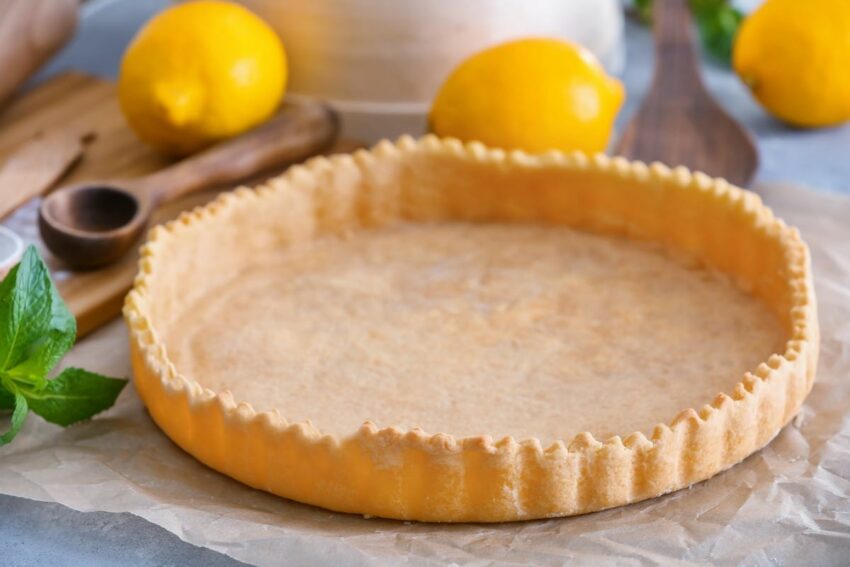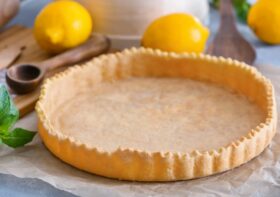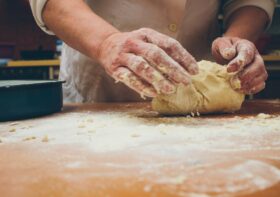How to Keep Pie Crust from Shrinking: Essential Tips for Perfect Baking

Baking a perfect pie often hinges on one crucial element: the crust. It can be disheartening to see your beautifully crafted pie crust shrink during baking, ruining the presentation and texture. Fortunately, with a few essential tips and tricks, you can prevent this common issue. Here’s how to keep pie crust from shrinking.
What Causes Pie Crusts to Shrink?
The main causes of pie crust shrinkage are overdeveloped gluten from excessive handling, warm dough that softens fats too quickly, and insufficient chilling before baking.
The Role of Gluten in Shrinkage
Gluten, the protein in flour, gives structure to the pie crust. However, too much gluten development can cause the dough to become tough and elastic, leading it to spring back and shrink during baking. When flour and water mix, gluten forms, so handling the dough gently and avoiding excessive mixing helps limit gluten development and reduces the chance of shrinkage.
How Overworking the Dough Affects Your Pie Crust
Overworking the dough—whether by excessive mixing, kneading, or rolling—activates the gluten further, making the dough more likely to shrink in the oven. Each time the dough is handled, it becomes tougher and more elastic, so it’s essential to mix just until the dough comes together and then stop. Rolling the dough only as much as needed will help keep it tender and less likely to shrink.
Temperature’s Impact on Pie Crusts
Temperature plays a crucial role in pie crust shrinkage. When dough is too warm, the fats (like butter or shortening) soften too quickly, causing the dough to lose its shape and shrink in the oven. Keeping the dough cold—both before rolling and before baking—ensures the fat remains solid, which helps the crust hold its shape as it bakes. Chilling the dough after shaping also allows the gluten to relax, further preventing shrinkage.
How To Keep Pie Crust From Shrinking
Don’t Overwork the Dough
When mixing the dough, handle it as little as possible to avoid overdeveloping the gluten, which can lead to a tough, elastic crust that shrinks during baking. Mix just until the ingredients come together, then stop.
Let the Dough Rest
Allowing the dough to rest in the refrigerator for at least 30 minutes before rolling helps the gluten relax, which reduces the chance of shrinkage. Resting also lets the flour fully absorb the moisture, making the dough easier to roll out without resistance.
Don’t Stretch Your Dough
When fitting the dough into your pie pan, avoid stretching it, as this can create tension that causes the crust to shrink back while baking. Instead, ease the dough into the pan gently, letting it settle naturally into place.
Don’t Trim Your Crust Too Short
Leave a slight overhang of dough around the edge of your pie pan to allow for any natural pull-back during baking. This gives the crust room to shrink slightly without affecting the final appearance, so you still end up with a well-defined edge.
Chill Your Dough
After placing the dough in the pie pan, chill it again, ideally for at least 15–30 minutes. This helps the fat stay solid, supporting the crust’s shape and reducing the risk of shrinking in the oven.
Use Weights When Blind Baking
If you’re blind baking the crust, use pie weights, dried beans, or rice to hold the dough down and maintain its shape as it bakes. Fill the crust with weights after lining it with parchment paper to ensure the bottom doesn’t puff up and the sides don’t collapse.
What Ingredients Help Prevent Shrinkage in Pie Crusts?
Choose the Right Flour to Reduce Gluten
All-purpose flour has a moderate gluten content and is ideal for pie crusts. Avoid bread flour, as its higher protein content can make the dough tougher and more prone to shrinking. If you prefer a more tender crust, try using a blend of all-purpose and pastry flour with less gluten.
Butter vs. Shortening, or Both?
Both butter and shortening have unique properties that affect the pie crust. Butter creates a flavorful, flaky crust, while shortening’s higher melting point helps the dough hold its shape better in the oven. For a balance of flavor and stability, consider using a mix of butter and shortening. This combo provides the structure and flakiness needed to reduce shrinkage while adding a rich taste.
Use Vinegar or Egg
Adding vinegar or egg to your pie dough helps tenderize the crust and prevent shrinkage. A teaspoon of vinegar, added to the water before mixing, helps inhibit gluten development, making the dough less elastic. An egg, used as a binder, can add stability and prevent the crust from pulling in as it bakes. Both ingredients are optional but can make a noticeable difference in maintaining the crust’s shape.
Frequently Asked Questions
How Do You Crimp the Edges of a Pie Crust Without Causing Shrinkage?
To create a crimped edge on your homemade pie crust without shrinkage, avoid stretching the dough as you shape it. Gently ease the dough into the pie plate, ensuring it’s evenly distributed without any tension. A good rule of thumb is to leave a small overhang of dough around the edge before crimping. Letting the dough rest in the fridge after crimping also helps prevent it from sliding down as it bakes, so the beautiful buttery edge stays intact.
When Should You Add the Filling to Prevent Shrinkage?
For a homemade pie, add the filling only after your crust has rested and, if blind baking, has been pre-baked with pie weights. For pumpkin pie and other custard-based pies, it’s essential to let the crust cool slightly after blind baking to help it hold its shape when the filling is added. Always add the filling gently, pouring it in slowly to prevent any pressure on the crust edges that could cause shrinking.
What’s the Best Way to Prevent a Buttery Crust from Sliding Down?
A buttery crust can be prone to sliding, especially during blind baking. To prevent this, place the dough-lined pie plate in the freezer for 10–15 min before baking, allowing the butter to firm up and hold its shape. Adding pie weights on top of parchment paper when blind baking also ensures the crust stays in place, creating a stable base for filling.
Why Does My Pie Crust Crack While Baking?
Cracking in a pie crust usually occurs when the dough is too dry or hasn’t rested properly before baking. If your homemade pie crust cracks, it may be because the dough wasn’t hydrated enough—add water gradually when mixing until the dough comes together. Additionally, letting the dough rest before rolling and after placing it in the pie plate helps relax the gluten, preventing it from pulling apart as it bakes. Another tip is to roll the dough out to an even thickness to reduce the chance of weak spots that can crack during baking.



Leave a Reply